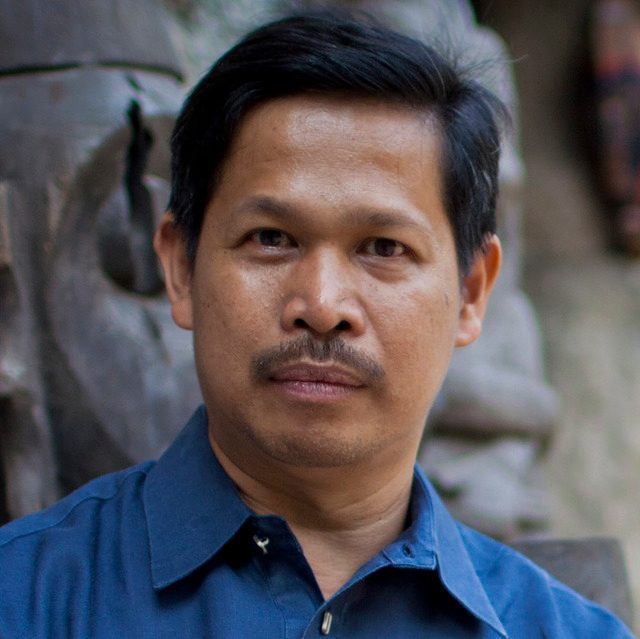SUMMARY
This is AI generated summarization, which may have errors. For context, always refer to the full article.
![[OPINION] Preserving indigenous knowledge in disaster recovery](https://www.rappler.com/tachyon/r3-assets/612F469A6EA84F6BAE882D2B94A4B421/img/B81B58841B33481DA33252DE9FA9E213/flooded-flourishing-disaster-recovery-indigenous-knowledge-imho.jpg)

For a country where millions still make a living through agriculture, there are few obstacles more unpredictable and damaging than typhoons. In communities where agriculture is still a main source of livelihood, stronger typhoons make climate change a greater burden on people’s livelihoods and food security. (READ: PH agriculture: Why is it important?)
After Typhoon Lando (Koppu) struck northern Luzon in October 2015, bringing with it heavy rains and winds of up to 185 kilometers per hour, farmers – especially those belonging to indigenous peoples (IP) communities – in the towns of Dagao and Gakian, Benguet and Monamon Norte, Mountain Province, found themselves struggling with communal irrigation systems, rice farms, and vegetable gardens laid to waste. (READ: Farmers lose debt gamble in typhoon-plagued Philippines)
Restoring access to water
The affected towns quickly sprung into action to fix their farming system. The Dagao Villagers’ Association conducted inspections of the path from the main water source to the farms, and they reported their findings to the National Irrigation Administration (NIA).
One of our partner organizations at the Shared Aid Fund for Emergency Response (SAFER), the Cordillera Network of Development NGOs and POs (CORDNET), worked with the Peace and Equity Foundation (PEF) to provide financial assistance to help farmers in Benguet repair their communal irrigation systems. The NIA also gave the Dagao farmers new PVC hoses to connect the river to a new communal water tank.
Learning from their experience, the Dagao farmers created multiple lines to the water tanks, supplying water more efficiently to the surrounding farms and ensuring that they have back-up supply in the event of another disaster. Meanwhile, farmers in Gakian used the assistance from CORDNET and PEF to find another water source and a more stable location for their communal water tank and to install hoses to deliver water to their vegetable farms. (READ: How a peaceful community in Marawi thrives)
Getting farmers to go ‘slow’
Another area where CORDNET provided support is in encouraging farmers to take up the practices of the slow food movement.
The slow food movement aims to ensure that people have access to quality, healthy food produced in a way that does not harm the environment, priced at levels both accessible to consumers and fair to producers. The movement encourages farmers to preserve seeds, agricultural practices, and recipes indigenous to their area and community.
CORDNET encouraged farmers to revitalize indigenous knowledge systems, practices, and resources to better adapt to the impact of climate change. Some of these practices and beliefs include lawa and inayan among the Kankana-ey, which provide an ethical mandate to grow crops in ways that are not harmful to both humans and the environment.
CORDNET and Slow Food Baguio member Sister Julie Garwinen also gave farmers mushroom and organic vegetable nets and plastic rain shelters so they can start practicing organic farming. In addition, Sister Julie taught women farmers in Tubla, Benguet to identify and plant crops that are resilient to climate change, and mix long-term and short-term crops to maximize their farms’ profitability while ensuring that key nutrients are restored in the land.
From recovery to prosperity
How does this benefit farmers in the long run? Smallholder farmers, especially those belonging to indigenous peoples communities, have native intelligence of different species and are more knowledgeable about their cultivation, ensuring that nutritious, local varieties survive and remain accessible. Keeping these knowledge systems, practices, and beliefs alive will allow communities to maintain their culture and the balance in their ecosystem without sacrificing their livelihood.
This movement also presents a potential opportunity for farmers to turn organic vegetables, rice, and other crops into high-value products, which can be sold to consumers, restaurants and hotels that use local produce, in the process helping more people gain better appreciation of healthier eating.
For farming communities to continue to flourish post-disaster, they will need access to land, water, financing, technical assistance, and markets to build on indigenous knowledge while improving their farms’ productivity and sustainability. Their success will encourage women and the younger generation to continue farming, ensuring food security within the region and in the country. (READ: How can the Philippines have a booming agricultural sector?)
Our network has shown that taking a long-term view to disaster recovery and rehabilitation is critical in helping communities better adapt to climate change while addressing related issues. Strong partnerships with local organizations, government units, and non-governmental organizations allow for a more efficient way to deliver resources, introduce sustainable practices aligned with community needs, and develop long-term plans for climate change adaptation. (READ: Lessons from Japan: Rebuilding agriculture after disasters)
When disaster response operates from an organized, respectful, inclusive, and sustainable perspective, we help communities bounce back better and prevent them from slipping into extreme poverty. We hope that the example of these farming communities would inspire more people to take a similar approach to disaster response and support organizations looking to make effective, community-centered response and recovery the norm across the Philippines. – Rappler.com
Fr. Edwin “Edu” Gariguez is the chairperson of Shared Aid Fund for Emergency Response (SAFER), a non-profit dedicated to launching public appeals following a disaster. SAFER mobilizes its member networks, corporate partners, and media to provide localized humanitarian assistance to the affected communities, assuring the public that their donations are used to deliver appropriate, effective, and efficient disaster relief to those who need it most.
Add a comment
How does this make you feel?
There are no comments yet. Add your comment to start the conversation.